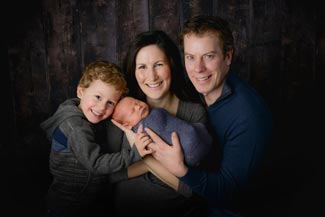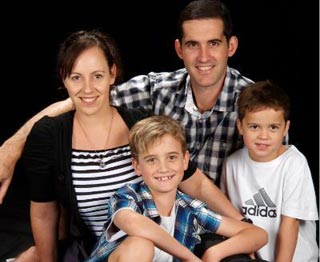If you ever have a spare moment, have a look at the amount of books that have been written on the subject, some a re specialising in a particular age group (328 pages on newborn baby!) or on specific subjects (an entire book on ‘sleep’) so as you can imagine, this chapter is never going to be the guidebook to childcare. As an au pair, we expect you to be keen and responsible when it comes to caring for children, we do not expect you to be an expert!
re specialising in a particular age group (328 pages on newborn baby!) or on specific subjects (an entire book on ‘sleep’) so as you can imagine, this chapter is never going to be the guidebook to childcare. As an au pair, we expect you to be keen and responsible when it comes to caring for children, we do not expect you to be an expert!
The family handbook should be a wealth of information about the children of the host family and your role for their care – ask the host parents about their children, their requirements and their preferences.
This chapter is designed ‘for illustration only’ to give you some of the basic information and milestones by age group, mostly focused on the physical and language development of the child and a selection of ‘what you can do’ suggestions. Below is an introduction to stages of child development.
Babies
NOTE: An au pair should not have ‘sole care’ for children under the age of 2 so always make sure you watch the mum closely and learn.
Routine – some parents have a very strict timetable and feed and sleep accordingly, others prefer to go with the baby’s body-clock and ‘feed on demand’. This is very personal and what works for one mum may be difficult for another!
If you are au pair in a family where there is a small baby, it is likely that your role involves keeping the older children entertained to allow mum to focus on the baby.
TIP 1 – Ask mum if you can take the baby out for a walk in the pram or buggy. If mum gets the baby ready in the right ‘gear’ for the weather; it will be easy for you to take the baby out, allowing mum to have some real ‘down-time’!
Baby social and emotional development newborn to 3 months
Developmental milestones include:
Between 4 – 8 weeks, she watches you face when you talk to her
Between 5 – 7 weeks, she begins to give you proper smiles
By 3 months, she can laugh out loud.
What can I do to encourage her social and emotional development?
Make faces with the baby. In the early days, faces will be baby’s favourite ‘toy’ so be expressive and get in close so she can really focus on your features
Be an appreciative audience for her smiles and laughs – if she gets lots of positive feedback from you, she’ll try her party trick again and again!
Baby physical development 3 to 6 months
Developmental milestones include:
Between 4 – 6 months, he rolls over
By 4 months, he can lift her head and chest when he’s on his tummy
By 3 months, he plays with his fingers and looks at his hands
By 3 – 4 months, he can grasp an object
By 5 – 6 months, he can chew
He can make and hold eye contact
He enjoys looking at brightly coloured objects
What can I do to encourage his physical development?
To practice his grasping skills, offer him a soft rattle (or any other small soft toy that makes a noise) so that he can discover that he can make a noise with it when he moves it.
Give him plenty of tummy time – at this age, he should enjoy it more
When he’s on his tummy, put toys in front of him and encourage him to reach out to grab them -he’ll probably do this accidentally at first.
Baby physical development 6 to 9 months
Developmental milestones include:
By 6 months, she holds objects and takes them to her mouth
Between 6 – 8 months, she is learning to hold and drink from a cup (usually with some assistance)
By 7 months, she can hold a spoon, but she can’t purposefully use it
By 7 months, she is beginning to eat a sold food diet
By 8 months, she can sit without any support
By 8 months, she can move around by creeping or rolling
What can I do to encourage her physical development?
Spend time on the floor playing on the floor – the more practice she gets sitting and creeping, the stronger her muscles will become.
When she’s sitting, arrange toys around her that are just out of reach so that she’ll have to get moving to get to them.
Let her play with her food – it may be messy but it’s also fun.
Offer her a range of differently textured toys that she can explore with her mouth.
An au pair should not have ‘sole care’ for children under the age of 2 so always make sure you watch the mum closely and learn.
Here are some ideas to entertain children in this age group:
Babies love looking at faces, make a funny face, stick out your tongue and smile. You can also cut out faces from magazines and show them to the baby.
Sing and dance – put on some music and sing along, if the baby is sitting up, have a dance around the chair or pick the baby up and dance (gently!) together
Make some music – fill an empty plastic bottle with some dry pasta and shake it to the music. You can also stick some colours in/on the bottle.
Sit the baby in front of a mirror or put a mirror in front of her face and let him//her have a good look at ‘the other baby’
Water play – fill a washing up bowl with a bit of water and let baby put hands in (supervise closely!)
Get some pots and pans from the kitchen and some wooden spoons and ‘cook’ together
Take baby for a ride in the buggy and show the park (ask mum where)
For lots more ideas go to:
http://www.bbc.co.uk/cbeebies/





